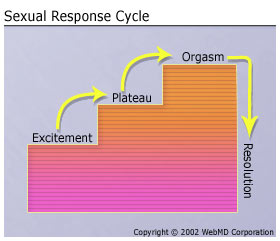<< Hide Menu
Dalia Savy
John Mohl
Mary Valdez
Dalia Savy
John Mohl
Mary Valdez
We also have three specific motivations: hunger motivation 🍔, sexual motivation, and social motivation 🗣️
🍔 Hunger Motivation
We all know our motivation of hunger too well, but let's go into the new information about it!
Washburn and Cannon, two psychologists, derived an experiment that concluded whenever we feel hungry, we experience stomach contractions. Our body, interestingly enough, keeps track of how many calories we take in and how many we burn.
- Glucose circulates through the blood and provides our bodies a major source of energy.
- If glucose levels decrease, our body is signaled and we become hungry. The brain triggers the hunger in the hypothalamus: - ⬆️Lateral hypothalamus—Stimulates hunger in a person- Produces orexin- If your lateral hypothalamus was destroyed, you would never have a will to eat.- 💡 Lateral Hypothalamus = Large Hunger- ⬇️Ventromedial hypothalamus—Stimulates satiation (fullness) after eating- If your ventromedial hypothalamus was destroyed, you would never stop eating.
- Thyroid—Regulates metabolism
- Pancreas—Regulates glucose in the bloodstream

Image Courtesy of Sutori.
There are also lots of neurotransmitters and hormones that play a role in hunger that you should be familiar with:
- ⬆️Ghrelin—increases hunger, secreted by an empty stomach
- ⬆️Orexin—increases hunger, secreted by the hypothalamus
- ⬇️PYY—decreases hunger, digestive tract hormone
- ⬇️Leptin—decreases hunger, protein hormone secreted by fat cells
- Insulin—controls glucose levels, secreted by pancreas
Set-Point Theory
Set-Point Theory states that every body has a fixed weight. When losing weight, there is increased hunger and lowered metabolism, which causes a weight rebound 🤸♀️
Basal Metabolic Rate
This is a measure of how much energy our body takes in while resting and maintaining homeostasis.
👅 Taste Preferences
Some facts to know about hunger:
- When we think about whether or not we should eat, we automatically think of food. This actually, in turn, triggers hunger.
- We often consume a lot of carbs when we are upset, since they boost serotonin!
- As we learned in unit 4, conditioning can alter anything, including our taste preferences.
- Our culture tells us what food we should eat and what food we shouldn't eat, impacting our preferences.
- Neophobia, or the dislike of new foods 🤢, exists as well, and it is all because of our ancestors. Not trying new, unknown foods protected them.
- Did you ever notice that you eat more when you are with your friends or family 🍏🍕🍳? This is 100% normal; when we see others eat, it makes us want to eat. Also, having different options definitely plays an impact on how hungry you get.
Sexual Motivation
Sexual Motivation seeks to describe and explain sexually motivated behavior in order to treat sexual disorders. It is a physiological need that is affected by learning and one’s values.
Zoologist Alfred Kinsey did a sexual survey in 1948, which was the first of its kind, but not that scientific. However, he found that most men and ½ of the women who participated in the survey engaged in premarital sex, which was unheard of at the time in society.
Sexual Response Cycle
Master’s & Johnson's 1960’s study about sex identified 4 stages for men and women.
- Excitement—Beginning of sexual desire. Blood flows to genital region.
- Plateau—Sexual desire and excitement peaks. Secretion increases.
- Orgasm—Genitals contract causing ejaculation, occuring after sexual stimulation. Breathing, heart rate, and blood pressure reach their highest points.
- Resolution—Body returns to an unaroused state. Males enter a refractory period, which is a resting period in which they cannot achieve orgasm again until this period is over.

Image Courtesy of WebMD.
Sexual Dysfunction
Sometimes, a problem occurs that impairs ones ability to feel sexually excited. The APA classified this disorder in two ways:
- A person experiences distress from unusual sexual interest
- The sexual desire entails harm to other people
Hormones
Just like everything else, hormones activate sexual behavior and enable puberty in teenagers. The primary female sex hormone is estrogen, while the primary male sex hormone is testosterone. Hormones and sexual attraction go hand in hand together and always interact.
🗣️ Social Motivation
Humans are generally very social beings, so we have this social affiliation need and it is one of the three basic human motivations.
Belonging
There are a few facts that you should know about feeling connected to others and close to the community you are in:
- Being social boosted the chances of survival ❤️of our ancestors.
- If we are both social and have a sense of personal control (autonomy), we usually have a high self esteem and feel valued.
- Unit 9 is all about social psychology, so you'll learn about all of this in-depth, but we often would do anything to conform to a group and gain acceptance.
- Ostracism, or the pain of being excluded, exists as well. Many people reach their low when they end relationships with their close friends or partners. Children who are in the foster system also fear being alone and excluded.
- Ostracism is the reason why many immigrants immigrated 🌎 as a society, rather than alone. In our time and age, we also have social media that impacts our mental health and feeling of belonging. We always see people communicating and taking pictures together. Sometimes, we even see people hanging out just looking at their phones.
Technology 💻📱 really changed our lives, but we have to be careful and monitor our social networking use.
🎥 Watch: AP Psychology—Motivations
🏆 Trivia—Motivations

© 2024 Fiveable Inc. All rights reserved.